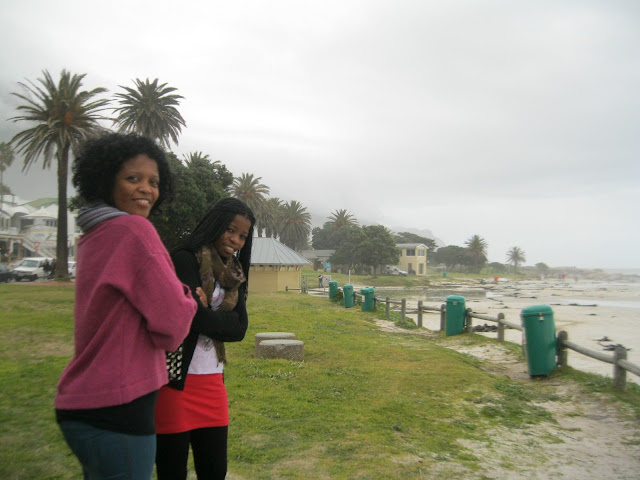 If I could choose my dream career, I'd travel the world learning about all the origins, varieties, and blends of wine in the world. Okay, so I guess in short I'd be a wine connoisseur, but one who travels and maintains close connections with the producers themselves to understand exactly how each glass was crafted, and how one origin differs from another. Think the cross between a wine connoisseur and anthropologist. Anyways, back to reality... Yes I've always been a fan of wine (I mean, who isn't?) but after traveling to South Africa and learning about the world of wine in their perspective, I can't get over how intrigued I am by the complexity of the wine industry. Not only are there several single varietals uniquely harvested in South Africa - muscadel, pinotage, voigener - but in a historical sense the wine industry in SA is crucial to studying and improving SA's historical land right and racial inequality issues.
If I could choose my dream career, I'd travel the world learning about all the origins, varieties, and blends of wine in the world. Okay, so I guess in short I'd be a wine connoisseur, but one who travels and maintains close connections with the producers themselves to understand exactly how each glass was crafted, and how one origin differs from another. Think the cross between a wine connoisseur and anthropologist. Anyways, back to reality... Yes I've always been a fan of wine (I mean, who isn't?) but after traveling to South Africa and learning about the world of wine in their perspective, I can't get over how intrigued I am by the complexity of the wine industry. Not only are there several single varietals uniquely harvested in South Africa - muscadel, pinotage, voigener - but in a historical sense the wine industry in SA is crucial to studying and improving SA's historical land right and racial inequality issues.Just for personal kicks, I attempted to photograph my favorite bottles of wine I met while in SA. Here's my photo recap. Some photos are recycled from previous blog posts, while others are new.
I was lucky enough to go on several private wine tours while in South Africa, in addition to a handful of organized wine tours. Some of my personal wine highlights:
Who knows - maybe I'll get into the wine business, or become a professional wine taster.
- At Citrusdal wines in particular, I was given a private tour by the head winemaker, Jacko, and had the opportunity to ask as many questions as possible. The wines we tasted were bottled right in front of my eyes, pulled straight from the steel holding tanks which is why the bottles below have no labels.
- Another highlight was at Springfield in Robertson. I don't have photos for this place but wine tasting here felt like a science experiment. We tasted one grape varietal, merlot I believe, but was processed using two different storing methods. One was stored in your traditional oak barrel while the other was stored in a steel tank, with the later considered to be more modern and appreciated among American palates. Needless to say the difference between the two was boldly evident, with the traditional method carrying a lingering bold oak body.
- There were several single wine varieties in South Africa that I had never tasted nor heard of before. Viognier, which falls somewhere in between a Chardonnay and Sauvignon Blanc was one of my favorites. I bought this actual bottle from Kransklop, a winery we visited in Robertson.
Other notable favorites:
I didn't try this exact bottle, but I noticed a popular trend of fusing pinotage with coffee and/or mocha. There was another one that was sold at most large retailers called 'Cappupino Ccinotage', or a Capuccino Pinotage... get it? Anyways, I wanted to try that one as well but didn't get a chance to. Most of them have a coffee or mocha scent, although it may not necessarily carry a coffee or mocha taste.
I didn't try this exact bottle, but I noticed a popular trend of fusing pinotage with coffee and/or mocha. There was another one that was sold at most large retailers called 'Cappupino Ccinotage', or a Capuccino Pinotage... get it? Anyways, I wanted to try that one as well but didn't get a chance to. Most of them have a coffee or mocha scent, although it may not necessarily carry a coffee or mocha taste.
The Cape Jazz Shiraz, a sparkling shiraz was AMAZING. I was lucky enough to find it at the Cape Town airport and yes you guessed it, purchased it.
Gifts are always an immediate favorite.
Couldn't resist the temptation of purchasing this unique blend. Muscadel + Pinotage - two varietals native to South Africa.
My South African souvenirs of choice:
Steller Organics FT Certified shiraz
Van Loveren's FT certified Pinotage























































